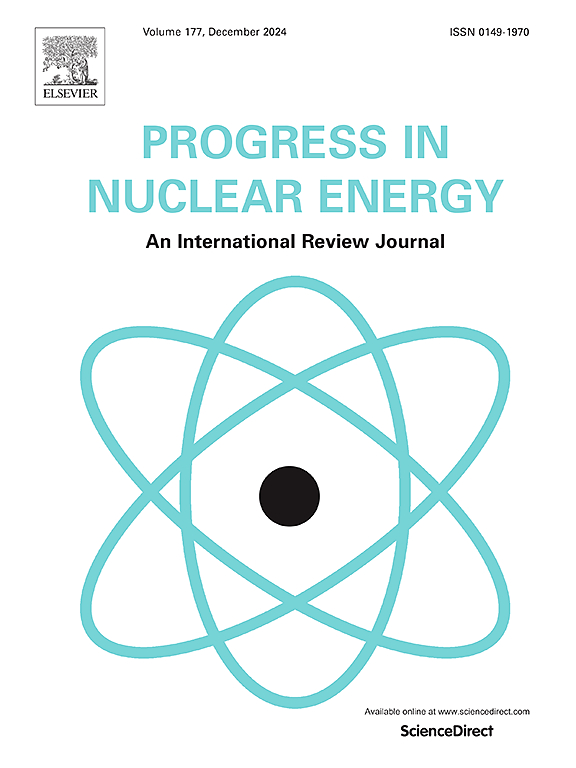Characterization of the Ignalina NPP RBMK-1500 reactors graphite: Review and summary of current situation and recent developments in respect to the reactor core dismantlement
IF 3.2
3区 工程技术
Q1 NUCLEAR SCIENCE & TECHNOLOGY
引用次数: 0
Abstract
The Ignalina NPP contains two Reactor Units each of which is equipped with an RBMK-1500 reactor. The reactor of the first Unit of the Ignalina NPP was shut-down in the end of 2004 while the second reactor was shut-down the end of 2009. RBMK-1500 reactors at Ignalina NPP are expected to be the first large-scale commercial graphite reactors to be decommissioned in the world. The dismantlement of any reactor core requires the most complex engineering solutions, as the core is the most irradiation affected area of the whole NPP. As the RBMK reactor core is dominated (at least by volume) by graphite stack, the issues related to its dismantlement are of great importance. For appropriate planning and implementation of actual decommissioning works, the proper characterization of object to be dismantled is a key prerequisite, and this paper presents current situation of the RBMK-1500 reactors graphite key properties in the perspective of the reactor core dismantlement.
格纳利纳核电站RBMK-1500反应堆石墨的特性:关于反应堆堆芯拆除的现状和最新发展的回顾和总结
伊格纳利纳核电站包含两个反应堆单元,每一个都配备了一个RBMK-1500反应堆。伊格纳利纳核电站1号机组的反应堆于2004年底关闭,而2号反应堆于2009年底关闭。伊格纳利纳核电站的RBMK-1500反应堆预计将成为世界上第一个退役的大型商用石墨反应堆。任何反应堆堆芯的拆除都需要最复杂的工程解决方案,因为堆芯是整个核电站受辐射影响最大的区域。由于RBMK堆芯以石墨堆为主(至少在体积上),因此其拆除问题非常重要。对于实际退役工作的合理规划和实施,正确的拆除对象表征是关键前提,本文从堆芯拆除的角度介绍了RBMK-1500反应堆石墨关键性能的现状。
本文章由计算机程序翻译,如有差异,请以英文原文为准。
求助全文
约1分钟内获得全文
求助全文
来源期刊

Progress in Nuclear Energy
工程技术-核科学技术
CiteScore
5.30
自引率
14.80%
发文量
331
审稿时长
3.5 months
期刊介绍:
Progress in Nuclear Energy is an international review journal covering all aspects of nuclear science and engineering. In keeping with the maturity of nuclear power, articles on safety, siting and environmental problems are encouraged, as are those associated with economics and fuel management. However, basic physics and engineering will remain an important aspect of the editorial policy. Articles published are either of a review nature or present new material in more depth. They are aimed at researchers and technically-oriented managers working in the nuclear energy field.
Please note the following:
1) PNE seeks high quality research papers which are medium to long in length. Short research papers should be submitted to the journal Annals in Nuclear Energy.
2) PNE reserves the right to reject papers which are based solely on routine application of computer codes used to produce reactor designs or explain existing reactor phenomena. Such papers, although worthy, are best left as laboratory reports whereas Progress in Nuclear Energy seeks papers of originality, which are archival in nature, in the fields of mathematical and experimental nuclear technology, including fission, fusion (blanket physics, radiation damage), safety, materials aspects, economics, etc.
3) Review papers, which may occasionally be invited, are particularly sought by the journal in these fields.
 求助内容:
求助内容: 应助结果提醒方式:
应助结果提醒方式:


